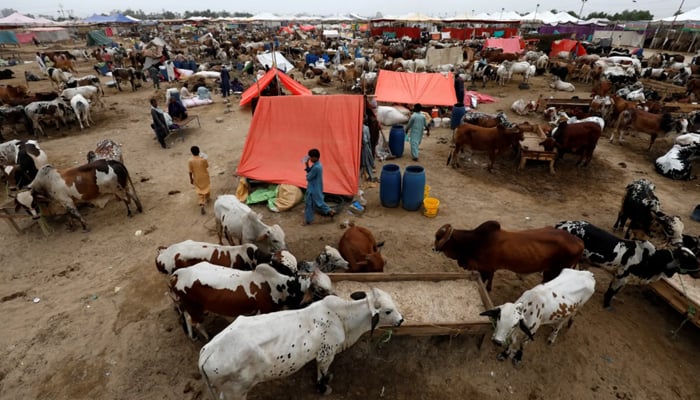Congo virus: NIH issues advisory ahead of Eid-ul-Adha
NIH says it's imperative to be vigilant about situation, take necessary steps to interrupt transmission of Congo virus
June 21, 2022

- NIH says it is imperative to be vigilant about situations.
- In 2022, two Congo cases reported across Pakistan.
- Infected people mimic symptoms of dengue fever.
ISLAMABAD: The National Institue of Health (NIH) Tuesday issued an advisory on the Crimean-Congo Haemorrhagic Fever (CCHF) in the wake of high disease transmission and risk due of spread owing to the anticipated increase in human-animal interaction during Eid-ul-Azha.
The health body said it was imperative to be vigilant about the situation and take necessary steps to interrupt the transmission of the Congo virus.
Since the diagnosis of the first human case of CCHF in 1976, sporadic cases have continued to occur in various geographical regions of the country, the NIH said.
Although Balochistan remains the most affected province, the cases have been reported from across the country every year.
Balochistan has submitted 19 suspected cases — out of which 14 were positive and five deaths occurred in 2021.
In 2022, a total of four confirmed cases have been reported — two cases each from Punjab and Sindh.
How does it transmit?
The CCHF virus is transmitted to people either by tick bites or through contact with infected animal blood or tissues during and immediately after slaughter.
The transmission to humans occurs through contact with infected ticks or animal blood. CCHF can be transmitted from an infected person to another person by contact with infectious blood, secretions, or body fluids.
Hospital-acquired CCHF infections can also occur due to improper sterilisation of medical equipment, a breach in infection control practices, reuse of injection needles, and use of contaminated medical supplies.
Symptoms
A person infected with the Congo virus mimics signs and symptoms of Dengue Hemorrhagic Fever (DHF).
“Considering its transmission dynamics (human-to-human) and high mortality, it is imperative to exclude CCHF through a careful epidemiological history/ clinical examination of the patient while strictly observing the prescribed hospital infection control measures,” the NIH said.
Suspected: Any person with sudden onset of fever over 38C° or more for more than three days and less than 10 days with hemorrhagic symptoms and animal contact history from a CCHF endemic area.
Probable: A suspected case with a history of 10 days of febrile illness with above mentioned clinical presentation and epidemiological link to CCHF endemic areas.
Confirmed: Suspected/probable case with lab confirmation of CCHF (PCR & serology).
Incubation period
The NIH said if a person is infected by a tick bite, the incubation period is usually 1-3 days, with a maximum of 9 days. The incubation period following contact with infected blood or tissues is usually 5-6 days, with a documented maximum of 13 days, it added.
Preventive measures
Currently, there is no safe and effective vaccine widely available for human use, the NIH noted.
It said that in the absence of a vaccine, the only way to reduce infection in people is by reducing risk factors and educating the community on preventive measures.
Reducing the risk of infection transmission from tick-to-human while visiting high-risk areas:
- Wear protective clothing (long sleeves, long trousers);
- Wear light-coloured clothing to allow easy detection of ticks on the clothes;
- Regularly examine clothing and skin for ticks; if found, remove them safely;
- Use approved acaricides on clothing;
- Use approved insect repellent on the skin. Insect repellents are the most effective in warding off ticks in human populations;
- Avoid visiting areas where ticks are abundant and seasons when they are most active.
Reducing the risk of infection transmission from animal to human:
- Wear gloves and other protective clothing while handling animals or their tissues in endemic areas, notably during slaughtering, butchering and culling procedures in slaughterhouses or at home;
- Quarantine animals (possibly 30 days) before they enter slaughterhouses or routinely treat animals with acaricides prior to slaughter;
- Inject ivermectin to animals with ticks, 24-30 days before slaughter.
Reducing the risk of infection transmission from human to human in community:
- Avoid close physical contact with CCHF-infected people;
- Wear gloves and protective equipment when taking care of ill people;
- Wash hands with soap regularly after caring for or visiting ill people;
- Observe safe burial practices by avoiding contact with mucus membranes & body fluids of the deceased patient and use of appropriate PPEs while touching the deceased person.











